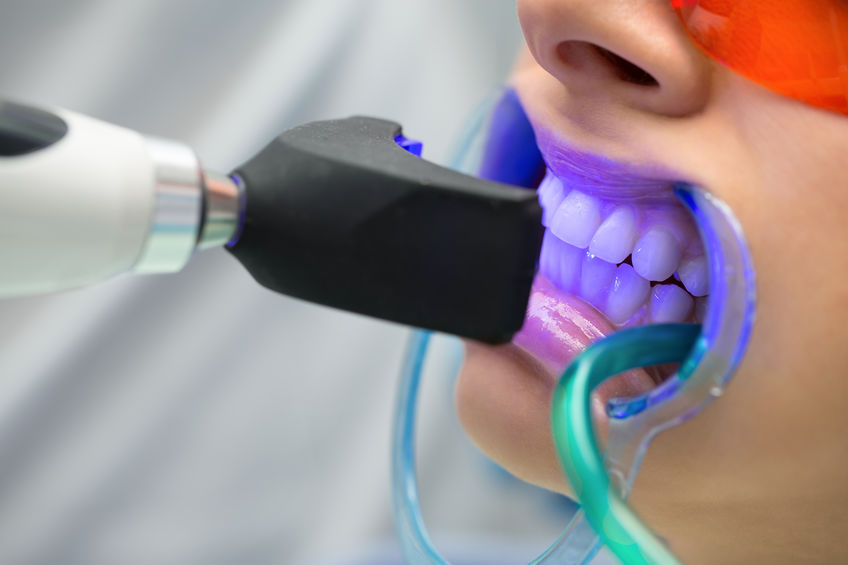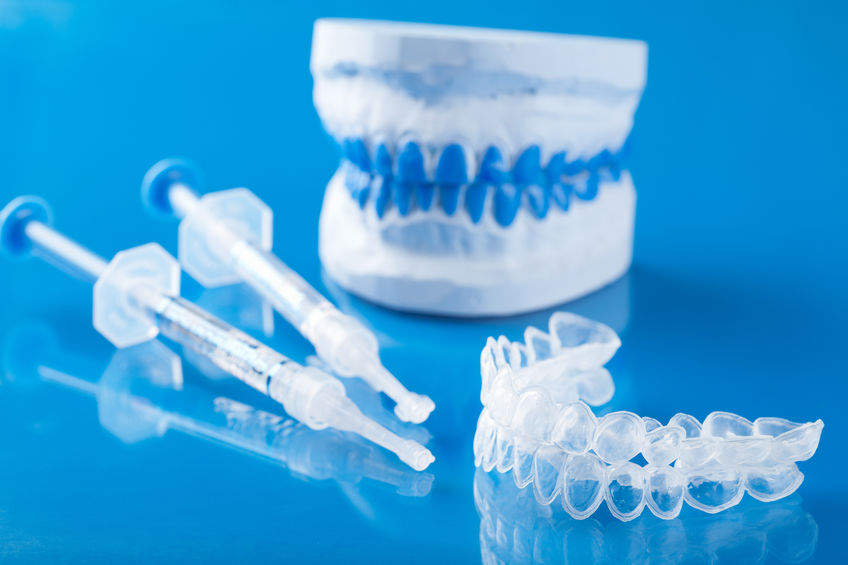Teeth Whitening/Bleaching
Say goodbye to stains and put the shine back in your smile!
As time goes on, one’s teeth may appear not as white or bright as they used to be. A number of things may cause this to happen. Some of the causes are heavily pigmented foods or drinks (coffee, tea, red wine, etc.), tobacco use, age, trauma, old restorations and medications.
Teeth whitening is the process where one of two tooth whitening chemicals (hydrogen peroxide or carbamide peroxide) are applied to the tooth. These chemicals work on the stain in the enamel and deeper layers of dentin to oxidize stains into smaller pieces, which makes the color less concentrated and your teeth whiter.

The four main options for brightening your smile:
- Stain Removal Toothpastes
- Almost all toothpastes have mild adhesives to help remove surface stain. Whitening toothpastes have extra polishing ingredients to help remove to external stain on the tooth.
- The whitening toothpastes only remove the stain on the surface of the tooth and will not change the color of the tooth.
- Look for whitening toothpastes that have earned the ADA Seal of Acceptance for stain removal (it will tell you on the package) as they are safe for your teeth.
- Avoid whitening toothpastes that are not approved as they may be too abrasive and damage the tooth enamel.
- In-Office Bleaching
- This procedure is called chairside bleaching or light activated whitening (such as Zoom!) and usually requires only one office visit.
- The dentist will apply either a protective gel to your gums or a rubber shield to protect your gums. Bleach is then applied to the teeth.
-

- At-Home Bleaching from Your Dentist
- D. Krueger will make impressions of your teeth and make custom fitted vinyl trays. Whitening gel is provided to place in the trays. The trays are worn several hours a day for 2–4 weeks.
-

- This method may be a preferred option if you feel more comfortable whitening in your own home at a slower pace, but still with the guidance of a dentist.
- Over-the-Counter Bleaching Products
- There are several products available online, at the grocery or local drugstore that may help brighten your smile. Some work better than others.
- Discuss the options with your dentist and look for one with the ADA Seal of Acceptance as it means it has been tested to be safe and effective for teeth whitening.
Some people who use teeth whiteners may experience tooth sensitivity. That happens when the peroxide in the whitener gets through the enamel to the soft layer of dentin and irritates the nerve of your tooth. In most cases the sensitivity is temporary. You can delay treatment, then try again. Overuse of whiteners can also damage the tooth enamel or gums.